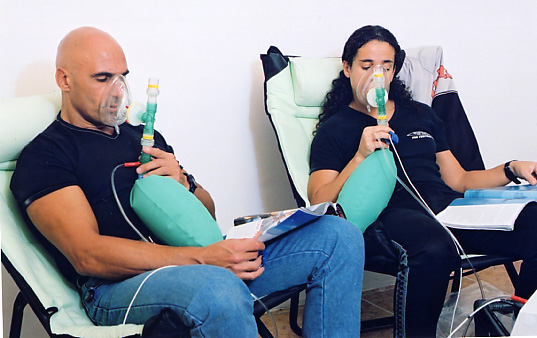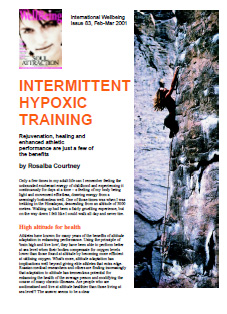Benefits of Altitude Training
Fitness – Athletes make use of various high altitude training and living environments to improve strength, speed and other aspects of performance (Gough, Saunders et al. 2012). Over 80% of Olympic medal winners have made use of altitude training and both the Australian and NSW Institutes of Sport have altitude training chambers.
Non athletes, including the elderly can also benefit with improvements in various markers of aerobic fitness, circulation and breathing (Burtscher, Pachinger O et al. 2004).
Health – General health can also improve in non-athletes who spend time at moderate levels of altitude. Research has shown that there can be improvement in immune function, increased anti-oxidant production, enhanced metabolic function, improved glycemic control as well as better blood flow and breathing (Singh 1977, Larsen, Hansen et al. 1997, Lee, Chen et al. 2003).
Some conditions found to improve in high altitude environments include asthma, diabetes, depression, anxiety, gastrointestinal disease and obesity (Singh 1977, Kayser and Verges 2013, Kong, Zang et al. 2014, Wang, Liu et al. 2014).
Decades of research in the former Soviet Union showed that IHT delivered through a mask could achieve similar benefits as sustained exposure to high altitude (Serebrovskaya 2002).
How does it work?
The brief, intermittent exposure to hypoxia during IHT stimulates epigenetic changes and increased expression of genes that allow adaptation to altitude. The end result of hypoxia adaptation include improved oxygen, better circulation, improved mitochondrial function, increased tolerance to various stressors and even toxic chemicals, increased antioxidant production and reduced inflammation (Kayser and Verges 2013, Verges, Chacaroun et al. 2015). These adaptive changes can enhance physical and mental capacity, so that the body is better able to cope with a range of stressors and repair and heal cells tissues and organs.
IHT also impacts on the stem cell and has been found to mobilise stem cells so that they can move to areas where they are needed (Serebrovskaya, Nikolsky et al. 2011) .
IHT increases endothelial production of nitric oxide (NO) while also preventing NO overproduction in brain and other tissues. It also enhances storage of excessive NO in the form of S-nitrosothiols and dinitrosyl iron complexes. The end result is neuro-protection of various pathologies, reduced blood pressure (Lyamina, Lyamina et al. 2011) and a reduction of oxidative stress (Malyshev, Bakhtinia et al. 2001, Manukhina, Downey et al. 2016).
Hypoxia – a matter of dose
Oxygen is the most essential element for our survival, and the adverse consequences of hypoxia are well known, so it’s surprising to many to hear that controlled exposure to oxygen deficit (or hypoxia), if within a person’s adaptive range, can actually promote longevity, enhance physical performance and even help to create conditions that support healing in certain diseases (Serebrovskaya 2002, Verges, Chacaroun et al. 2015).
Intermittent Hypoxia (IH) has varied effects on multiple body systems and the magnitude of these effects (and even the direction) depends on the IH “dose”. With low cycles-per-day counts and/or mild to moderate hypoxic episodes, beneficial effects are predominant (Navarrete-Opazo and Mitchell 2014, Verges, Chacaroun et al. 2015). Low doses of IH in the body’s adaptive range can have a directly opposite effect to those demonstrated in patients with sleep apnea, respiratory insufficiency, stroke or infarct (Serebrovskaya, Manukhina et al. 2008, Burtscher, Haider et al. 2009). Notably there have been no reported cases of adverse events from clinical use of IHT in the scientific literature (Rosalba Courtney 2015-unpublished literature review).
What’s Involved
During IHT the person alternates breathing oxygen reduced air with room air or with oxygen enriched air, through intervals typically several minutes long. IHT breathing programs are individually selected for each individual in accordance with their adaptive capacity, condition and training objectives.
A typical course of therapy involves 10-30 session.
—————–
Further information can be found in Rosalba’s blog – ‘Intermittent Hypoxic Training – Altitude training at sea level’
For an assessment or to book an IHT course contact Rosalba here


